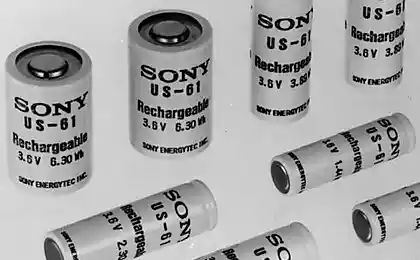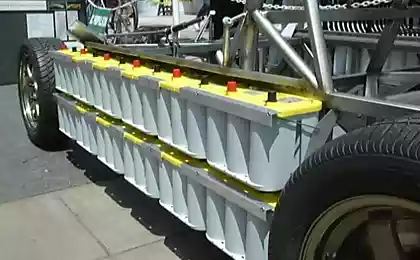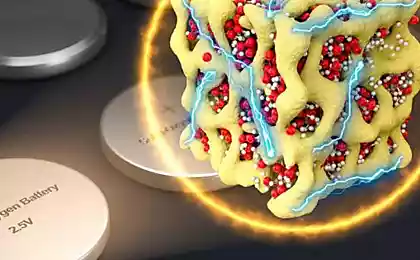442
Developed a prototype of a flexible lithium-air battery
A group of scientists from the Chinese Academy of Sciences unveiled the prototype of a flexible lithium-air battery. Original engineering solution helped to overcome the problems facing the creation of a flexible battery, and opens prospects for the creation of a new generation of wearable electronics. While the battery is only rated for 90 recharge cycles, but is able to work even under water. This tells Science News with reference to article of scientists in the journal Small.

Away from the standard placement of electrodes at the sides of the battery engineers managed by locating them in the form of concentric layers, as in coaxial cable. The basis of the battery — patch cord from lithium. Instead of the standard liquid electrolyte used polymer gel, which is uniformly distributed inside the battery. The cathode is made of flexible carbon fabric, it covers the rubber layer with perforations for air. Heating the outer layer binds all the elements of the battery electric contact.

In the testing technology was able to withstand more than a thousand of flexion and even worked under water due to the hydrophobicity of the electrolyte. However, the number of recharges is limited to recharge this battery while you can for about 90 times. The researchers plan to improve the technology to increase the number of charge cycles. Powerful and flexible battery needed to reach a new level of creation of so-called wearable electronics from a variety of wristband trackers to clothing with electronic "stuffing." published
P. S. And remember, only by changing their consumption — together we change the world! ©
Join us in Facebook , Vkontakte, Odnoklassniki
Source: www.energy-fresh.ru/news/?id=13214

Away from the standard placement of electrodes at the sides of the battery engineers managed by locating them in the form of concentric layers, as in coaxial cable. The basis of the battery — patch cord from lithium. Instead of the standard liquid electrolyte used polymer gel, which is uniformly distributed inside the battery. The cathode is made of flexible carbon fabric, it covers the rubber layer with perforations for air. Heating the outer layer binds all the elements of the battery electric contact.

In the testing technology was able to withstand more than a thousand of flexion and even worked under water due to the hydrophobicity of the electrolyte. However, the number of recharges is limited to recharge this battery while you can for about 90 times. The researchers plan to improve the technology to increase the number of charge cycles. Powerful and flexible battery needed to reach a new level of creation of so-called wearable electronics from a variety of wristband trackers to clothing with electronic "stuffing." published
P. S. And remember, only by changing their consumption — together we change the world! ©
Join us in Facebook , Vkontakte, Odnoklassniki
Source: www.energy-fresh.ru/news/?id=13214
Ryazan Instrument Plant is launching a series of station slow electric vehicle charging fora
9 Steps to Find Melatonin























